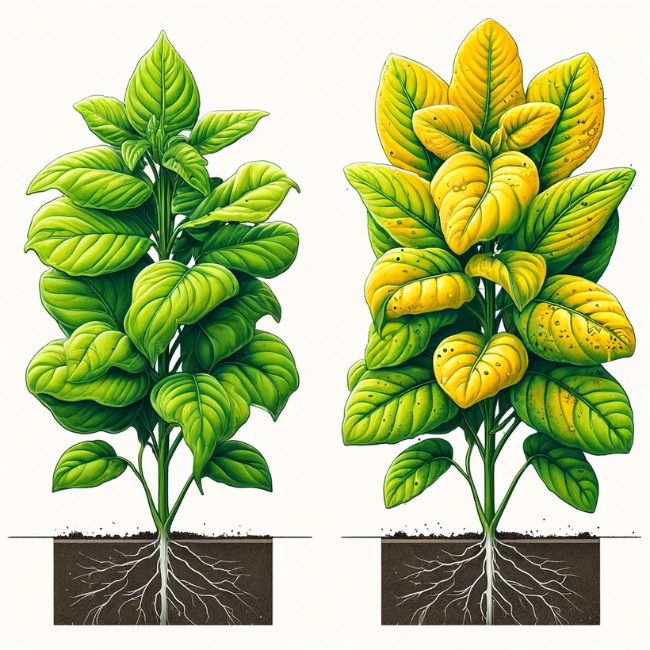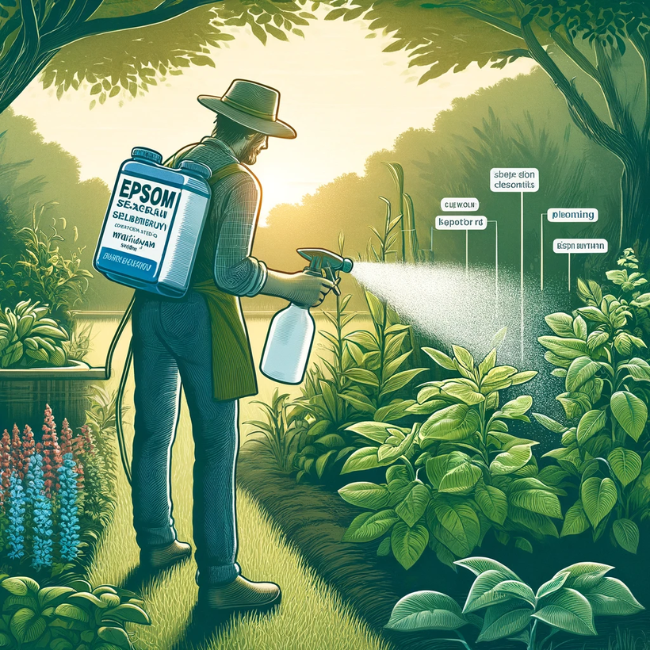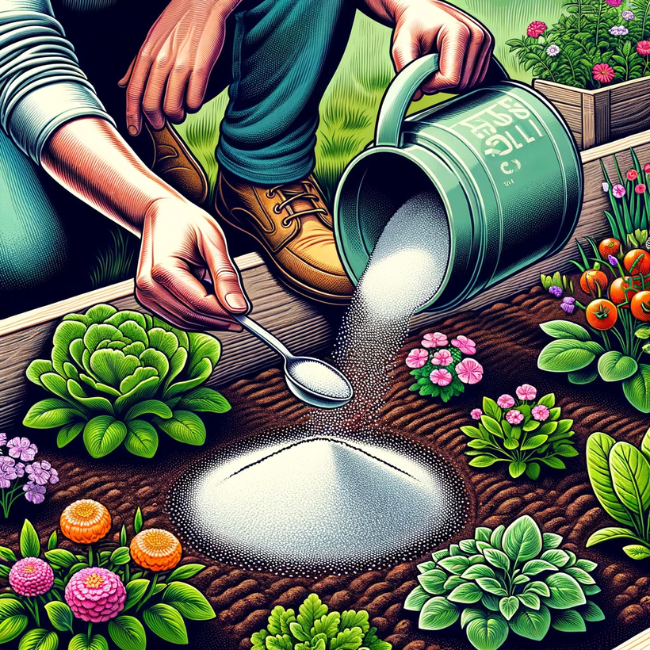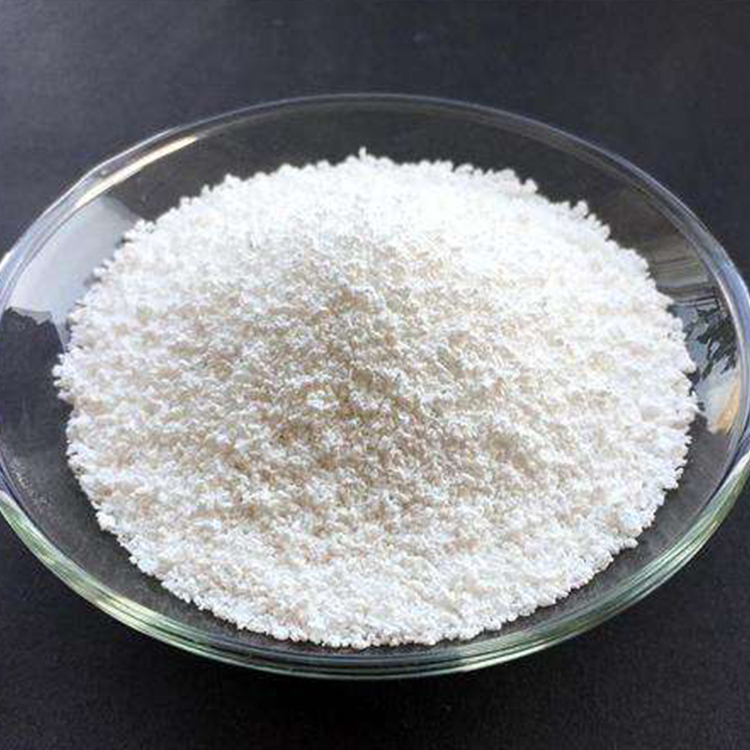Epsom salt, scientifically known as magnesium sulfate, is more than just a staple in bathroom cabinets for soothing baths. In the gardening world, it is celebrated for its remarkable benefits to plants. This simple yet powerful compound consists of magnesium and sulfur—two vital nutrients that significantly enhance plant health and productivity.
What is Epsom Salt?
Epsom salt for plants is a naturally occurring mineral compound that contains magnesium, sulfur, and oxygen. Its chemical formula is MgSO₄·7H₂O, indicating that it also includes water molecules. This composition makes it highly soluble in water, an essential feature that facilitates its use in gardening. Unlike table salt, which can harm plants and soil, Epsom salt offers beneficial properties without the risk of toxicity.
Overview of its Role in Gardening
In gardening, Epsom salt is used primarily as a supplementary fertilizer to bolster plant growth and vitality. It is especially useful in enriching magnesium-deficient soils, a common issue in many regions. Magnesium is crucial for plant life as it is a central component of chlorophyll, the molecule responsible for photosynthesis. Without sufficient magnesium, plants cannot effectively convert sunlight into energy, leading to stunted growth and diminished health.
Additionally, the sulfur in Epsom salt helps improve the absorption of nutrients like nitrogen, phosphorus, and potassium, further promoting lush plant growth. It also enhances the production of enzymes and vitamins in plants, boosting their disease resistance and health.
The role of Epsom salt in gardening extends beyond mere nutrition. It has proven effective in helping plants overcome transplant shock, promoting seed germination, and even improving flower blooming and fruit production. As such, Epsom salt is a versatile and invaluable addition to any gardener’s toolkit, encouraging healthier, more vibrant gardens.
The Benefits of Epsom Salt for Plants
Epsom salt is not just another garden supplement; its distinctive properties can transform plant care, especially due to the essential nutrients it delivers directly to plants. Let’s explore how magnesium and sulfur, the key components of Epsom salt, play pivotal roles in plant health, and how they specifically benefit flowering and fruiting plants.
Role of Magnesium and Sulfur in Plant Health
Magnesium is critical in the plant kingdom. It serves as the central atom in chlorophyll, the green pigment necessary for photosynthesis. Photosynthesis is the process by which plants convert light energy into chemical energy, which fuels plant activities and growth. Without sufficient magnesium, plants show signs of chlorosis (yellowing leaves), especially in the younger leaves, and energy production decreases, stunting growth.

Sulfur, on the other hand, is vital for the synthesis of important amino acids and proteins in plants. It also plays a role in the formation of enzymes and vitamins like vitamin B1, which are crucial for cellular function and the overall health of the plants. Sulfur improves root strength and resistance, which enhances water and nutrient uptake.
Specific Benefits for Flowering and Fruiting Plants
Flowering and fruiting plants have high demands for magnesium, particularly as they transition to the blooming and fruiting stages. Epsom salt can help these plants form larger, more vibrant flowers and significantly increase fruit production. Additionally, it helps in the creation of sweeter fruits by contributing to the general health of the plant which optimizes photosynthesis.
Enhancing Nutrient Uptake
How Epsom Salt Improves Root Health and Nutrient Absorption
When Epsom salt is applied to the soil, the magnesium helps to break down heavy soils, improving soil structure and drainage. This enhanced soil environment allows roots to penetrate more deeply and absorb nutrients more efficiently. Furthermore, magnesium aids in plant root health by enabling the plant to uptake vital nutrients such as nitrogen, phosphorus, and sulfur more effectively from the soil. Healthy roots are crucial for robust plant growth, as they support the plant’s ability to absorb water and nutrients needed for survival and growth.
Boosting Plant Growth and Vigor
Case Studies and Examples of Growth Improvements in Common Garden Plants
- Tomatoes and Peppers: These plants are particularly responsive to magnesium supplements. Gardeners have reported that Epsom salt applications lead to more plentiful and larger fruits. A study observed that when Epsom salt was applied twice at flowering and fruit set, the yield of tomato plants increased significantly.
- Roses: Known for their magnesium hunger, roses treated with Epsom salt often exhibit darker, greener foliage and more frequent blooms. An informal trial showed that roses fertilized with Epsom salt experienced improved growth and strength compared to untreated plants.
- Lawns: Epsom salt can help in greening up lawns and grasses, making them lush by providing essential nutrients that may be lacking in garden soils.
These examples illustrate just a few of the ways that Epsom salt can positively affect garden plants, from improved vigor and yield to enhanced visual appeal and health.
How to Use Epsom Salt in Your Garden
Integrating Epsom salt into your garden routine is straightforward and can be tailored to different types of plants and their specific needs. Here’s how you can apply Epsom salt to both garden beds and potted plants effectively.
Application Methods
Mixing Epsom Salt with Water for Foliar Spraying
Foliar spraying is an effective method for applying Epsom salt directly to the leaves, allowing plants to absorb essential nutrients through their foliage. This method is particularly useful for quickly addressing magnesium deficiencies.

- Preparation: Dissolve 2 tablespoons of Epsom salt in one gallon of water. Ensure the salt is fully dissolved.
- Application: Use a spray bottle or a garden sprayer to apply the mixture to plant leaves. Apply early in the morning or late in the afternoon to avoid the midday sun, which could cause the leaves to burn.
- Frequency: Spray once a month or according to the specific needs of your plants. This is especially beneficial during key growth phases, such as flowering or fruiting.
Direct Application to Soil: When and How Much
Applying Epsom salt directly to the soil is another effective way to enrich your plants with magnesium and sulfur.

- Application: Sprinkle 1 tablespoon of Epsom salt per square foot around the base of each plant and gently incorporate it into the soil to help prevent runoff.
- Watering: After applying, water your plants thoroughly to help dissolve the Epsom salt and facilitate its uptake by the roots.
- Frequency: This method can be done once every two months during the growing season, or as needed based on soil tests or visible plant symptoms.
Epsom Salt for Potted Plants
Potted plants can also greatly benefit from Epsom salt, especially those in nutrient-depleted potting mixes.
Recommendations for Frequency and Dosage
- Dosage: Use about 1 teaspoon of Epsom salt per gallon of soil a few times a year. This can be adjusted based on the size of the pot and the plant’s response.
- Method: Mix the Epsom salt into the water used for irrigating your plants. This ensures even distribution and prevents salt buildup at the root level.
Tips for Incorporating Epsom Salt into Routine Plant Care
- Monitoring Plant Health: Keep an eye on your plants for signs of magnesium deficiency, such as yellowing leaves or slow growth, which can be particularly apparent in fast-draining containers.
- Regular Feeding: Combine Epsom salt treatments with regular feeding schedules. Epsom salt is not a complete fertilizer, so it should be used in conjunction with other plant nutrients.
- pH Testing: Periodically test the pH of the soil in your pots. Epsom salt has a neutral pH, but it’s important to ensure the soil remains balanced because extreme pH levels can affect nutrient uptake.
By following these guidelines, you can maximize the health benefits of Epsom salt for both your garden and potted plants, ensuring they receive the right amount of nutrients for optimal growth and health.
Troubleshooting Common Garden Problems with Epsom Salt
Epsom salt can be a crucial ally in addressing some typical garden ailments. Understanding how to identify and treat these issues with Epsom salt can save many of your plants and improve overall garden health.

Yellowing Leaves and Magnesium Deficiency
Identifying Symptoms and Correcting with Epsom Salt
Yellowing leaves, particularly those that are yellow between the veins, can indicate a magnesium deficiency, a common issue in many garden plants. This symptom is often most visible on lower leaves as the plant reallocates magnesium to new growth.
- Identification: Look for leaves that show yellowing between the veins while the veins themselves remain green. This condition is known as interveinal chlorosis.
- Correction: To address magnesium deficiency, dissolve 2 tablespoons of Epsom salt in a gallon of water and use this solution to water the affected plants. Alternatively, for a quick fix, you can spray the leaves directly with a similar Epsom salt solution. Repeat the treatment biweekly until the yellowing diminishes and the foliage returns to a healthy green color.
Overcoming Blossom End Rot in Tomatoes and Peppers
Role of Epsom Salt in Preventing and Treating Blossom End Rot
Blossom end rot is a common problem in tomatoes and peppers, often characterized by a dark, rotten spot at the blossom end of the fruit. This issue is typically caused by calcium deficiency, often due to uneven water uptake or excessive nitrogen fertilization, which can impede calcium absorption.
- Prevention and Treatment: While Epsom salt itself does not contain calcium, its application can help improve calcium uptake by strengthening the plant’s overall nutrient absorption system. Apply Epsom salt by dissolving 1 tablespoon per gallon of water and watering the base of the plants. This can help ensure a more consistent uptake of calcium from the soil, especially in fast-draining soil types where nutrients tend to wash away quickly.
- Additional Tips: Ensure regular and even watering schedules to prevent the soil from drying out, as inconsistent moisture levels can exacerbate blossom end rot. Also, consider using calcium-rich foliar sprays alongside Epsom salt treatments to directly address calcium deficiencies.
Utilizing Epsom salt in these ways can help you manage some of the most common nutritional issues in the garden, leading to healthier plants and more bountiful yields.
Epsom Salt Mixtures and Homemade Fertilizer Recipes
Epsom salt can be a versatile component in many homemade garden solutions. By combining it with other natural ingredients, gardeners can create highly effective, cost-efficient treatments that cater to a variety of plant needs.
Creating Effective Home Remedies for Plant Care
Epsom salt alone can do wonders for your plants, but when mixed with other ingredients, it can provide a broader spectrum of nutrients and benefits. Here are a few simple recipes to enhance plant growth, protect against pests, and improve soil health:
- General Purpose Fertilizer: Mix 1 part Epsom salt with 1 part baking soda and 2 parts compost. This mixture provides a balanced supply of magnesium, sulfur, and potassium, along with the rich organic matter from the compost. Spread this mixture lightly around the base of your plants every month during the growing season.
- Pest Deterrent Spray: Combine 1 tablespoon of Epsom salt with 1 gallon of water and a few drops of liquid dish soap. The soap helps the solution stick to the leaves, while the magnesium-rich mixture deters pests. Spray this solution onto the foliage of plants early in the morning or late in the evening once every two weeks.
- Seed Starter Boost: Mix 1 teaspoon of Epsom salt into your soil mix before planting seeds. The extra magnesium helps seedlings to develop strong cellular walls from the outset, promoting healthier, more vigorous growth.
Combining Epsom Salt with Other Natural Ingredients for Enhanced Effects
Using Epsom salt in conjunction with other natural ingredients can address a wider range of garden conditions and enhance overall garden health:
- For Acid-Loving Plants: Mix Epsom salt with coffee grounds to create a nutrient-rich mulch. The coffee grounds help to acidify the soil while the Epsom salt provides essential magnesium and sulfur. This is particularly beneficial for plants like blueberries and azaleas.
- For Improved Flowering: Blend Epsom salt with bone meal to create a high-phosphorus fertilizer that also supplies magnesium. This combination promotes strong root development and vibrant flower production. Use this blend sparingly around the base of flowering plants at the beginning of the bloom season.
- For Lawn Care: Dissolve 2 tablespoons of Epsom salt in a gallon of water and use it to water your lawn. This solution encourages lush, green growth by providing magnesium, which is crucial for chlorophyll production.
These homemade remedies and fertilizer recipes using Epsom salt not only nurture healthier plants but also leverage the natural properties of common household and garden products, making them an eco-friendly choice for gardeners looking to reduce chemical use and enhance their plant care regimen.
FAQs About Using Epsom Salt in the Garden
Epsom salt is a popular topic among gardeners for its simplicity and effectiveness. Here are some frequently asked questions that address common concerns and clarify how best to use Epsom salt in your garden.
1. Can Epsom salt replace my regular fertilizer?
- No, Epsom salt should not replace your regular fertilizer. It does not contain nitrogen, phosphorus, or potassium, which are critical macronutrients for plant growth. Instead, use Epsom salt as a supplementary treatment to provide magnesium and sulfur, which can help enhance the effectiveness of your regular fertilizer.
2. How often should I apply Epsom salt to my garden?
- The frequency of application can vary depending on your plant’s specific needs and the existing soil conditions. A general guideline is to apply Epsom salt once a month during the growing season. However, if you notice signs of magnesium deficiency (such as yellowing leaves between the veins), you might need to apply it more frequently.
3. Is there any risk of using too much Epsom salt?
- While Epsom salt is generally safe for plants, excessive use can lead to a buildup of magnesium that can potentially interfere with the uptake of other minerals like calcium and potassium. Always follow recommended dosages and consider conducting a soil test to tailor applications to your garden’s specific needs.
4. Can Epsom salt help all types of plants?
- Most plants will benefit from the magnesium and sulfur provided by Epsom salt, especially if they are grown in magnesium-deficient soil. However, some plants, like beans and leafy greens, can be particularly responsive to magnesium supplements. Always research or test how your specific plants react to Epsom salt before making it a regular part of your gardening routine.
5. How do I apply Epsom salt to potted plants?
- For potted plants, dissolve 2 tablespoons of Epsom salt in one gallon of water and use this solution to water your plants once a month. This will help ensure that your potted plants receive a consistent amount of magnesium and sulfur, which can be especially beneficial in container gardens where nutrients leach out more quickly.
6. Are there any environmental concerns with using Epsom salt in the garden?
- Epsom salt is considered environmentally friendly as it naturally breaks down into magnesium, sulfur, and oxygen, which do not pollute the water or soil. However, as with any gardening additive, it should be used judiciously to avoid altering soil chemistry excessively.
These FAQs offer a foundation for gardeners looking to integrate Epsom salt into their garden care practices effectively and safely. With proper use, Epsom salt can be a valuable addition to help your garden thrive.
As we have explored, Epsom salt offers numerous advantages for gardeners seeking to enhance the health and vitality of their plants. Its primary components, magnesium, and sulfur, play essential roles in plant development and productivity, making Epsom salt a valuable addition to any gardening regimen.
Recap of the Benefits and Uses of Epsom Salt
- Magnesium Contribution: Epsom salt enriches plants with magnesium sulfate, crucial for chlorophyll production and photosynthesis. This enhancement not only boosts plant energy efficiency but also leads to greener, more lush foliage.
- Sulfur Enhancement: The sulfur in Epsom salt aids in enzyme production, improves root growth, and enhances nutrient uptake, contributing to healthier and more robust plants.
- Versatile Applications: Whether applied directly to the soil, used as a foliar spray, or mixed into watering solutions, Epsom salt is a flexible tool that can address specific nutrient deficiencies and promote overall plant health.
- Safe for the Environment: Epsom salt is environmentally friendly, breaking down into components that naturally integrate into garden ecosystems without polluting the soil or waterways.
Encouraging Sustainable and Effective Gardening Practices
Incorporating Epsom salt into your gardening practices is not only about enhancing plant growth but also about fostering a more sustainable gardening approach. By using this natural mineral compound, gardeners can reduce reliance on chemical fertilizers, mitigate environmental impact, and promote a healthier garden environment.
For those looking to adopt more eco-friendly gardening practices, Epsom salt represents a simple yet effective step towards achieving this goal. It’s important, however, to use it thoughtfully and in conjunction with other organic gardening practices to ensure the best results for your plants and the planet.
In conclusion, whether you are a novice gardener or an experienced horticulturist, Epsom salt can play a pivotal role in your garden. By understanding its benefits and applications, you can make informed decisions that enhance plant health, boost yields, and contribute to a sustainable gardening future. Happy gardening!







